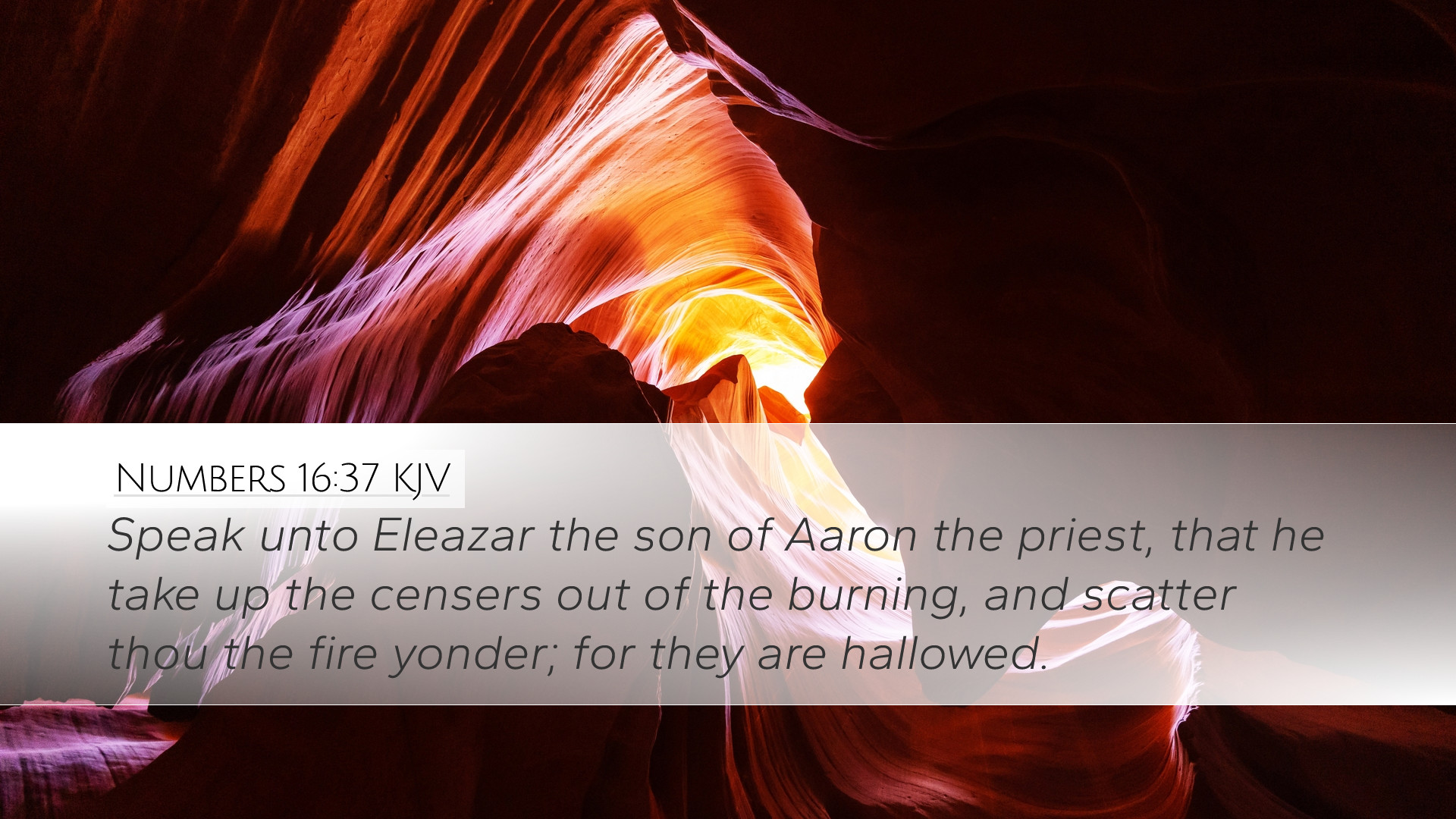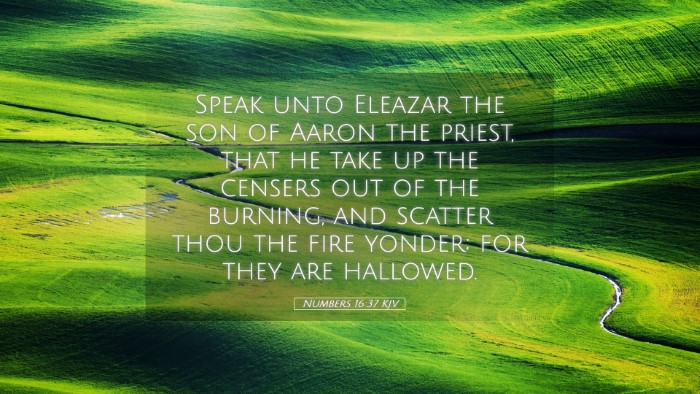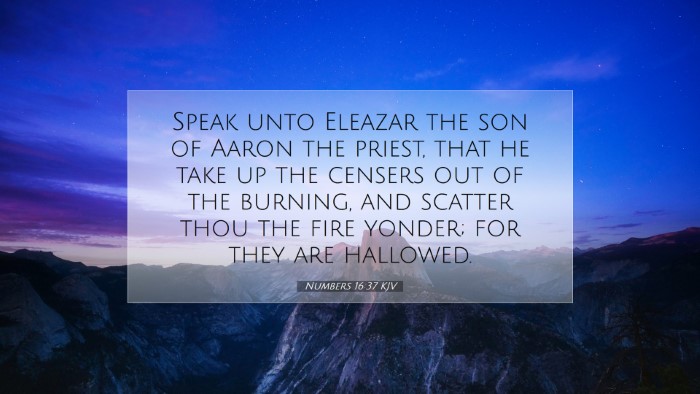Commentary on Numbers 16:37
Numbers 16:37 states: "Say to Eleazar the son of Aaron the priest, 'Take up the censers out of the blaze, for they are holy and let the incense be scattered abroad, and the censers be made into hammered plates as a covering for the altar, for they offered them before the Lord and they became holy; thus they shall be a sign to the people of Israel.'" (ESV)
Contextual Overview
This verse occurs in the narrative following the rebellion of Korah, Dathan, and Abiram against Moses and Aaron's leadership. It's essential to understand this setting to grasp the implications of the instruction given to Eleazar.
Theological Significance
The passage demonstrates God's response to rebellion and His desire for order within worship. The censers, used in the rebellion by the dissenters, held a deep sense of holiness, as they had been employed in worship. The Lord commands Eleazar to collect them, signifying a restoration of holiness along with the lesson that not every act of worship is acceptable to God.
Insights from Commentators
Matthew Henry
Matthew Henry provides a rich commentary that emphasizes several themes contained in this verse:
- Divine Authority: Henry notes that the actions commanded by the Lord underscore His sovereignty and the importance of adhering to His instructions regarding worship. There is a clear distinction between acceptable worship and rebellion, illustrating God's intolerance for insubordination.
- Holiness of Worship: He highlights the significance of holiness, stating that even the instruments of rebellion can be consecrated for holy purposes. This reflects God's mercy and ability to redeem even what has been misused.
- Instruction for the People: The transformation of censers into an altar covering serves as a perpetual reminder to the Israelites. It warns against the serious consequences of opposing God's chosen leaders and emphasizing obedience to Him.
Albert Barnes
Albert Barnes contributes his thoughts by discussing the practical implications of the verse:
- Symbolism of Fire: Barnes comments on the fire associated with the censers as indicative of divine judgment. The gathering of the censers from the flames symbolizes a clear separation between the holy and the profane.
- Sign for Future Generations: He stresses that the use of the censers in a new, sacred light provides a future sign or memorial, preventing the nation from forgetting the importance of fidelity to God and the dangers of rebellion.
- Consecration Process: The action of hammering the censers into plates illustrates the process of transforming what was used for evil into something sacred for God’s purpose, aligning with the broader biblical theme of redemption.
Adam Clarke
Adam Clarke examines the implications of the actions taken in this verse:
- Consequences of Rebellion: He emphasizes the gravity of the rebellion of Korah and its followers, noting that their censers, initially tools of dissent, become vehicles for teaching future generations about the holiness of God’s order.
- The Role of Priests: Clarke highlights Eleazar’s role as a priest in this redemption narrative, emphasizing that leadership within the community must uphold holiness and divine instruction, critical to guiding the people toward reverence for God.
- Historical Reflection: The hammered plates serve to remind the people of their historical failures and the necessity for continual obedience to God’s commands, reiterating the fundamental principle that God rewards faithfulness and punishes rebellion.
Practical Applications
The insights gathered from these commentaries provide multiple practical applications for modern believers:
- Importance of Leadership: Church leaders today must recognize their roles as those called to uphold biblical standards. The consequences of their actions can lead to lasting impacts on their congregations.
- Holiness in Worship: Individuals are encouraged to reflect on their own practices of worship, ensuring that they align with God’s commands and are not products of rebellion or misunderstanding.
- Remembering God’s Faithfulness: The method of transforming the censers into plates serves as a reminder to believers of the importance of remembering God’s past acts of faithfulness and the consequences of straying from His path.
Conclusion
Numbers 16:37 encapsulates profound truths about God's holiness, the appropriateness of worship, and the dire consequences of rebellion against divine authority. Through the insights of Matthew Henry, Albert Barnes, and Adam Clarke, we can glean not only a historical understanding but also practical lessons that remind us of our responsibility in worship and leadership today. The transformation of the censers serves as a memorial of God's justice tempered with grace, offering hope and a call to holiness for all generations.


